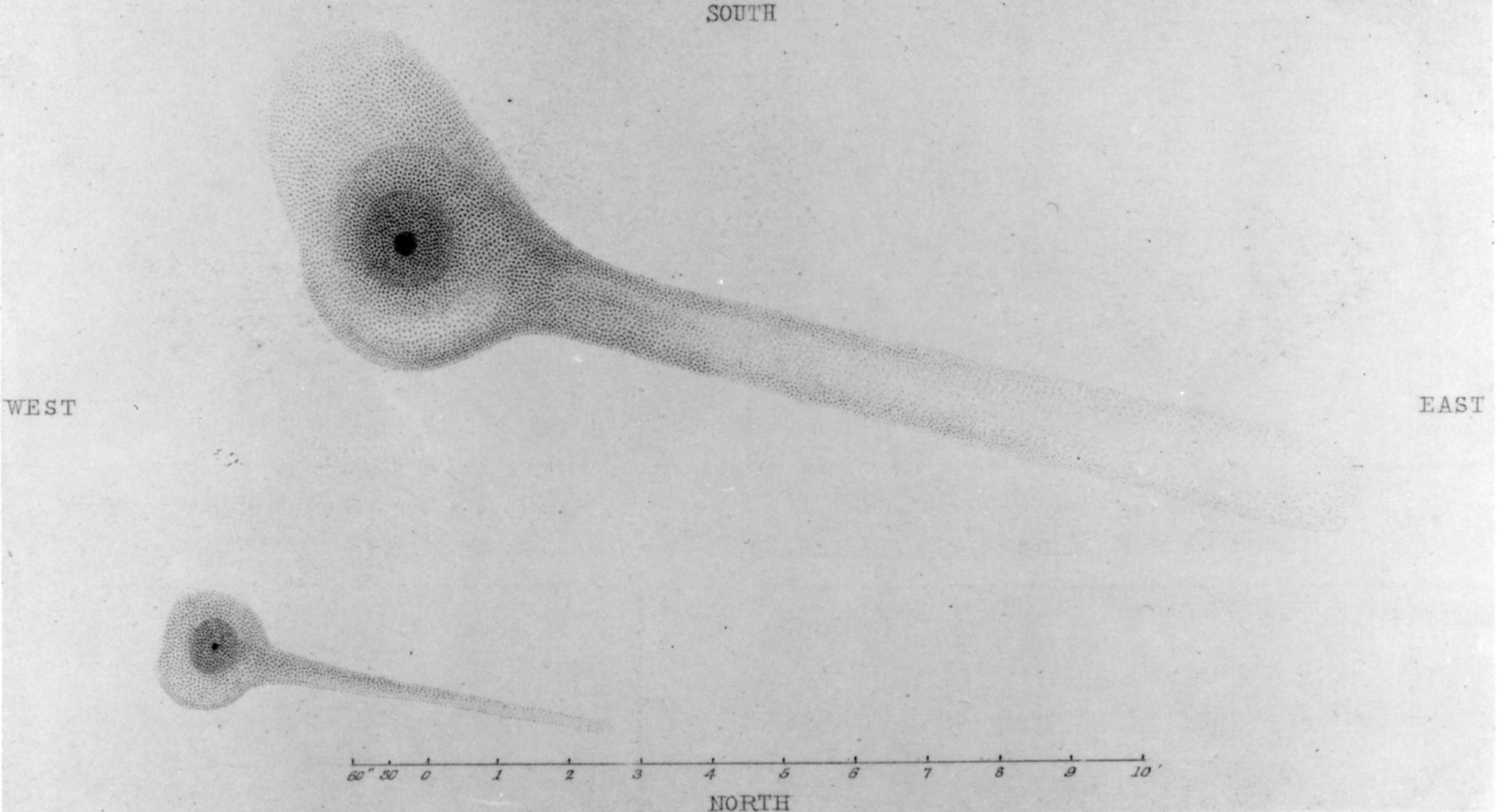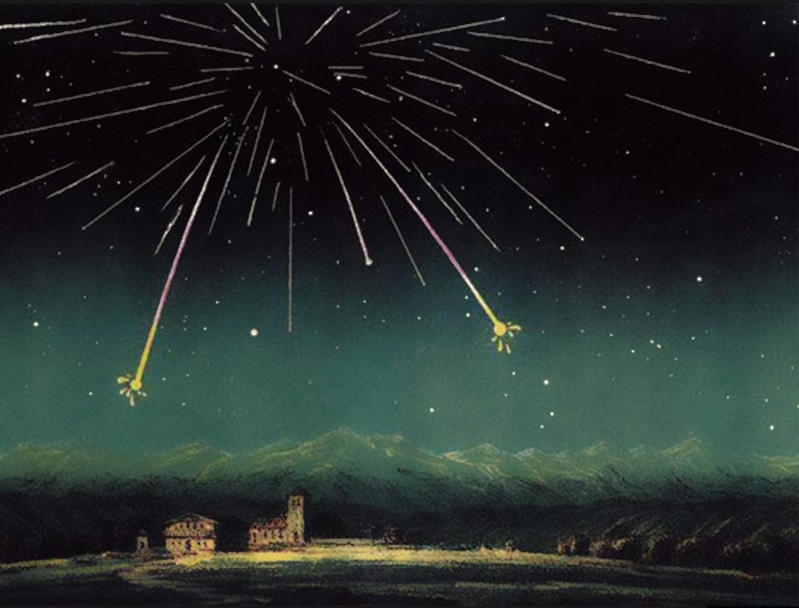

COMET OF THE WEEK
WEEK 8: FEBRUARY 16-22
COMET 3D/BIELA 1846 II
Perihelion: 1846 February 11.49, q = 0.856 AU
The comet was first discovered on March 8, 1772 by the French astronomer and comet hunter Jacques Montaigne, a contemporary and competitor of Charles Messier (who himself independently spotted it shortly thereafter). It remained just below naked-eye visibility (i.e., around 7th magnitude) and was followed for slightly under one month. Five returns later the French comet hunter Jean Louis Pons discovered it on November 10, 1805; on December 9 of that year it passed just 0.037 AU from Earth and was easily seen with the unaided eye at 4th magnitude or brighter. Some of the mathematical astronomers of that era, among them Carl Gauss, noticed a similarity between the 1805-06 comet and the 1772 comet but could not establish an identity between them.
An Austrian army officer, Wilhelm von Biela, discovered a comet on February 27, 1826; as he was also skilled at computing orbits he soon determined it was likely that this comet was the same as the comets that had appeared in 1772 and 1805-06. It was followed for long enough that year such that the link between them could be firmly established, and the orbital period was determined as being 6.7 years.


failure to appear have been construed as evidence that the comet completely disintegrated not too long after the middle of the 19th Century.
There have nevertheless been some attempts to recover Comet Biela in the years since then. One of the strongest efforts took place in 1971, when Brian Marsden calculated that if some asteroidal fragment remained and if it had ceased activity around 1859, it would be passing close to Earth late that year. Despite several searches, no trace of Biela was found then, nor at any other time. For what it’s worth, in 2001 the NEAT survey program discovered a faint periodic comet that travels in an orbit quite similar to that of Biela, but is apparently an unrelated object; now known as Comet 207P/NEAT, it will pass 0.22 AU from Earth in March 2024.
The lack of any strong Andromedid activity after 1899 has often been taken as a sign that Comet Biela has all but completely dispersed, however meteor expert Peter Jenniskens has pointed out that the dust stream that produces the Andromedid shower has likely shifted away from Earth due to gravitational perturbations from the planets, and in fact there does appear to be some very weak Andromedid activity from time to time. On December 5, 2011, a moderately strong Andromedid shower, with a peak rate of some 50 meteors per hour, was seen from Canada. A shower with similar rates that was expected to occur in 2018 apparently did not take place, but a possible Andromedid shower with potential rates as high as 200 meteors per hour may occur in 2023. The entire art of predicting meteor showers has developed dramatically during the past couple of decades, and the linkage between comets and meteor showers is the subject of a future “Special Topics” presentation.
Meanwhile, there seems to be a modern-day equivalent, of sorts, to Comet Biela. Comet 141P/Machholz 2 abruptly brightened to 7th magnitude and was accompanied by up to four “companion” comets (two of which were fairly bright) during its discovery return in 1994. One of these “companion” comets returned with the primary component in 1999, although it soon faded out. The comet was poorly placed for observation in 2005 and 2010, but was well placed in 2015; it was significantly fainter (12th magnitude) than it had been previously but was again accompanied by a fainter “companion” comet. It passes perihelion again late this year, under favorable viewing conditions (with its passing 0.52 AU from Earth in mid-January 2021) and . . . we’ll see what happens.
“Comet of the Week” archive
Ice and Stone 2020 home page
Earthrise Institute home page